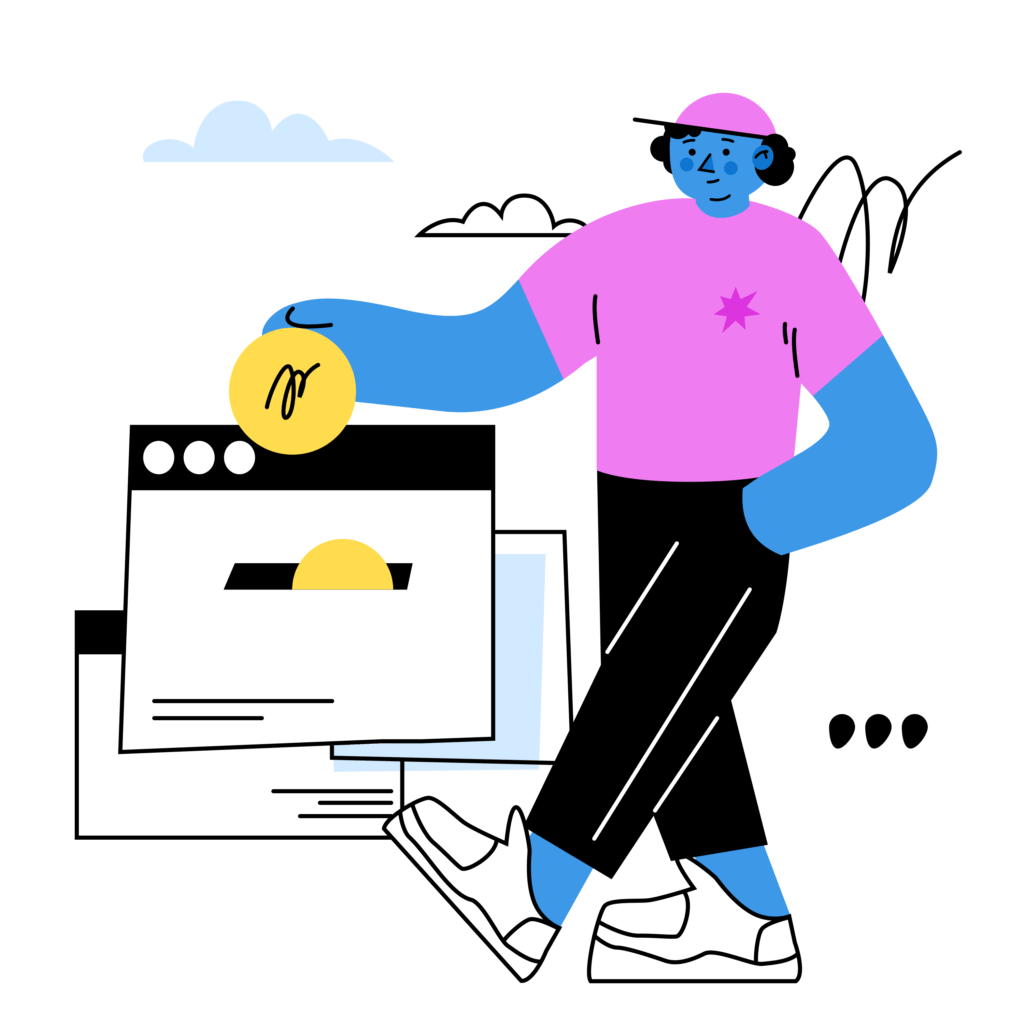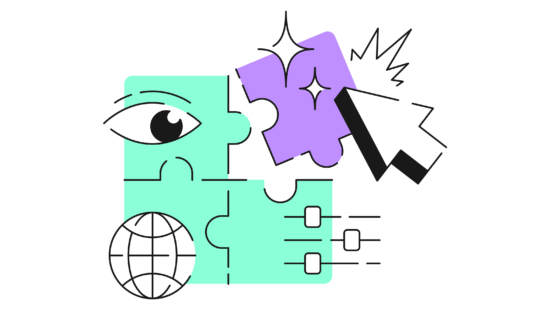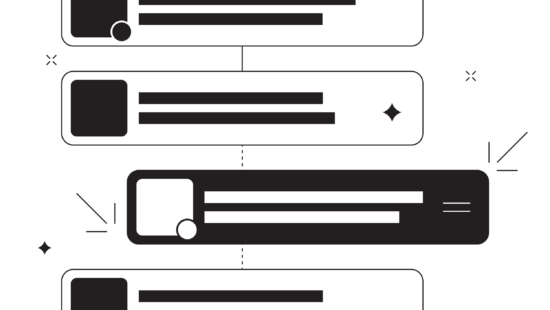If you’re like most “fresh” remote workers, chances are the new reality without a commute gives you a warm and fuzzy feeling. But as it usually happens with lit things, there’re some caveats too. In this case, it’s WFH procrastination that spoils all the fun.
Whether you’ve fallen in love with remote work or already miss your cubicle, one thing’s certain. Motivating yourself to get work done at home is a heck of a challenge.
That’s why in this episode of our work-from-home saga, we answer the following questions:
- 🦥 What are the roots of procrastination?
- 💔 Why do we love to procrastinate?
- 👊🏻 How to overcome WFH procrastination?
🦥 What Are the Roots of Procrastination?
“Know the true value of time; snatch, seize, and enjoy every moment of it. No idleness, no laziness, no procrastination: never put off till to-morrow what you can do today.”
Philip Stanhope, 4th Earl of Chesterfield
The human tendency to avoid work isn’t exactly a new thing. In fact, the modern word “procrastination” dates back as far as the 16th century to Latin prōcrāstinātus, which translates to “put off until tomorrow.”
But according to Eric Jaffe at Psychology Today, the concept is even older than that:
“People have struggled with habitual hesitation going back to ancient civilizations. The Greek poet Hesiod, writing around 800 B.C., cautioned not to “put your work off till tomorrow and the day after.” The Roman consul Cicero called procrastination “hateful” in the conduct of affairs.”
Most of the time, we’re pretty aware that we procrastinate. It’s the little pangs of guilt you feel every time you do something you’re not supposed to, like catching up on your favorite Netflix series when video conferencing with your team (classic).
Steven Pressfield, the author of The War of Art, frames procrastination as “resistance,” a powerful, sneaky entity directed against our creative and productive pursuits. Resistance often disguises as fear or anxiety and will do everything to prevent you from getting work done.
Tim Urban from a popular blog “Wait But Why” imagines procrastination as an unruly Instant Gratification Monkey. This critter thrives in the present moment, feeds off pleasurable activities and doesn’t give two cents about the possible fallout of delaying work.

💔 3 Culprits of WFH Procrastination
Ok, now that we know “what,” it’s time to answer the question, “why?”
It doesn’t matter if you work from a home office or Starbucks. Bouts of slacking can happen anywhere. But there’s no doubt WFH procrastination is the most insidious of all.
So, why is getting work done at home so tricky?
1. Lack of Accountability
This is the single reason why remote work rocks and sucks at the same time.
With coworkers, managers and even “The Man” out of the picture, you have complete freedom over your time and work. Now that you have the flexibility you’ve always wanted, you can finally be productive, right?
The thing is, lax supervision and too much flexibility are the surest way to WFH procrastination. And it’s not only that your boss doesn’t look over your shoulder. It’s also the internal accountability that takes a hit when we’re removed from a busy office environment.
Interestingly enough, Buffer’s 2020 “State of Remote Work” report found a lack of motivation to be a problem for a mere 7% of remote workers. The top spot (20%) was occupied by collaboration & communication problems along with loneliness to boot.
So, maybe it’s the lack of human-human contact that makes us slack?
2. Seeking Instant Gratification
Remember the Instant Gratification Monkey 🐒 we mentioned earlier? It’s still here, and it’s hungry. So better hurry up and finish reading this article before the critter takes over.
In a blog post “Why Procrastinators Procrastinate,” Urban explains that the Instant Gratification Monkey lives in our brains, right next to its antithesis called the “Rational Decision-Maker.”
While the Rational Decision-Maker you is productive, sets goals, fulfills obligations and consistently meets deadlines (wow), the IGM’s business is quite the opposite. The monkey you wants to play, watch the TV, browse the web and have afternoon naps, because it feels good.
WFH procrastination moments can take many forms:
- 📩 Write a report or check your email (again)
- 🌐 Edit a draft or google a ravioli recipe
- 🎮 Attend a video conference or play video games
- 📺 Call a disgruntled customer or watch Netflix
- 😴 Create a meeting agenda or take a nap
Now, don’t get us wrong. Tackling productive and meaningful work feels awesome. But instant gratification is, well… instant. At the end of the day, it all boils down to a simple question: “Would you rather have a cookie now or wait till tomorrow to get a jarful of those?”
3. Good Ol’ Distractions
Not everybody has a home office to shut in and do the work. And even if you have one, there are thousands of little (and big) distractions waiting for you at home.
WFH procrastination starts simple, with garden variety, day-to-day activities. While you wouldn’t normally be thrilled about them, they turn exotic and fun when put on a scale with real work.
Here are some usual culprits:
- 🐕 Walking the dog
- 🍳 Prepping meals
- 💤 Taking a nap
- 📚 Reading books
- 🧹 Household chores
- 📺 Watching the TV
- 🏋🏻♂️ Exercising
Most of these activities are off-limits in a regular office, at least outside of break time. But when you work remotely, it’s a classic example of “a person’s home is his or her castle.”
🍌 How to Overcome WFH Procrastination
So, how do you put that procrastination monkey back into its cage?
Well, contrary to what Internet gurus are preaching, there’s no quick and easy way to stop procrastinating. We know, it’s a bummer. But building the willpower to avoid putting things off time after time is a tedious process.
Your best bet? Building positive work habits in small, incremental steps. Sure, you’ll fail often (and hard), but as a retired Navy SEAL, podcaster and entrepreneur Jock Willink says: “Discipline Equals Freedom.”
Become a Time Wizard
Have you ever heard of the Rocks, Pebbles and Sand analogy?
No?
Imagine an empty mason jar with no lid on. Now imagine you have to put a couple of big rocks, smaller pebbles and some sand inside. How would you go about it?
If you start with pebbles, you’ll only cover the bottom of the jar. The big rocks will fill in the rest of the space and the sand will sift through, leaving plenty of unused space.

But when you start by putting big rocks in, fill the empty space with pebbles and top it all off with a dash of sand… Here’s your aha moment!
Think of the big rocks as the most important tasks in your day. It could be drafting a document or editing a project for a client. By tackling them first, you’ll still have some time/space left for lower-priority tasks like chores (pebbles) and video games (sand) after.
- 🏋️♂️ Deal with the most important (difficult) tasks first
- 🤾♀️ Tackle smaller tasks (pebbles) after that
- ✨ Remove all distractions (sand) from your workflow
Don’t Overthink It
The human brain has the power to make even the smallest tasks feel like summiting Mount Everest. Notoriously “overthinking” work will push you into a vicious circle:
“I’m not ready to do this yet” ⏩ “Let’s research some more” ⏩ “It’s soo late…” ⏩ “It’s already past the deadline so I’ll take care of it tomorrow.” ⏩ …
We get it. You want to do things just right at the first try. But while delivering superior work quality is a noble goal, not getting any work done because of that is not.
If you’re struggling to “just” start, keep these tips in mind:
- 📝 Most of the time, a simple to-do list will do
- 🤫 Gag your inner critic and stash him in the closet
- 🔥 Every first draft is trash. Save editing for later
- ⚡ If you can’t focus, embrace deep work
- ⏱ Set a Pomodoro timer for every task
Remember that a good idea that sees closure is better than a perfect one that remains an idea.
And if everything else fails… you can always (re)watch Shia’s “Just Do It.”
Build Up the Momentum
Let’s say you’ve overcome the initial doubt, imposter syndrome, inner critic and all other pesky obstacles. It seems you’re well on your way to actually finish what you started.
But don’t celebrate just yet.
Numerous studies have found that willpower is a finite resource. As we go through our days making all those big and small decisions, our ability to resist urges, temptations and procrastination decreases due to a process called willpower depletion.
Here’s how you can keep that momentum blazing:
- 🙉 Your willpower is a final resource so use it sparingly
- ⛅ Tackle the most important tasks/decision early in the day
- 📅 Plan your day/week ahead to prevent roadblocks
- 👂 Check in with yourself to stay on course through the day
- 🎉 Don’t celebrate too early and delay gratification
Procrastination is a sleeky beast. It waits patiently and strikes when your focus and motivation are at their weakest. To prevent that from happening, you need to build up enough momentum to keep going when your willpower depletes.
Stop Giving Up
If the thought of starting a new project (from scratch) keeps you up at night, we might have a perfect solution. Stop giving up!
Here’s the thing. Every time you pick up a task or project and drop it halfway, you’re back to square one. All the energy you put in goes to waste the moment you hoist the white flag.
If you don’t want to waste time and mental energy on starting over, do this instead:
- 💬 Reach out for motivation to fellow team members
- 🍪 Reward yourself at the end of a productive day
- 📢 Act as your own boss, and be serious about it
- 🧨 Break big, complex tasks into manageable chunks
- 🤝 Ask for help when you’re out of your depth
Giving up is nothing to be ashamed of. Sometimes too much work or too ambitious goals can nip productivity in the bud. But giving up on the earliest sign of adversity is procrastination at its finest.
Extra Tip: Use a Template to Create a Workflow
Let’s say you do give up and go back to square one. What then? Well, you can start the project from scratch and get through the drudgery again, or…
Use a template to kicks things off quickly!
With Taskade, you and your team can choose from hundreds of free templates that will ease into your existing workflow or help you build one in no time. Whether it’s simple to-do lists, meeting agendas or project boards, we have it.
Here’s a small sample just for you:
- ⚡️ Project Scrum Board
- 📔 Project Planning Checklist
- ✅ Weekly Tasks
- 📅 Weekly Team Workflow
- 📝 Meeting Notes

🐑 Parting Words
Beating WFH procrastination isn’t easy. After all, not only are you competing with yourself, but you also have to fend off hundreds of distractions surrounding you at home.
The good news is that by becoming more aware of the way you spend time at your home office, you learn to better manage and eventually prevent those nasty cravings from happening.
Sure, your success ratio will be flimsy at first. But when you’ll follow our tips and make small adjustments to your workflow, you’ll eventually put that unruly monkey behind bars for good.
Want to bump up your chances? Read these articles next:
- 🌐 Work From Home: Where Is it Heading?
- 📓 Work From Home: A Pocket-Sized Guide
- 🏡 Remote Work 101: Essential Tips for Working From Home
🤖 Custom AI Agents: Deploy teams of AI agents to automate tasks and streamline your personal and professional projects.
🪄 AI Generator: Save time by offloading project planning to Taskade AI. Simply describe what you’re working on to get started.
✏️ AI Assistant: Structure your schedule, prioritize to-dos, and minimize distractions with GPT-4 Turbo integrated into the project editor.
🗂️ AI Prompt Templates Library: Use AI prompts to kick off common projects and tasks across personal and business use cases.
And much more…



 Best AI-Powered To-Do List Apps in 2024:Boost Your Productivity with Smart Task Management
Best AI-Powered To-Do List Apps in 2024:Boost Your Productivity with Smart Task Management  The Pareto Principle: How to Maximize Efficiency with the 80/20 Rule
The Pareto Principle: How to Maximize Efficiency with the 80/20 Rule  Flowtime Technique Explained: A Complete Guide
Flowtime Technique Explained: A Complete Guide  How to Use the Method of Loci in 2024 — A Mnemonic Device for Memorization
How to Use the Method of Loci in 2024 — A Mnemonic Device for Memorization  Here’s How Eat the Frog Can Boost Your Productivity in 2024!
Here’s How Eat the Frog Can Boost Your Productivity in 2024!  8 Best AI Tools For Team Productivity
8 Best AI Tools For Team Productivity